Search Results for Strong
Explore AI generated designs, images, art and prompts by top community artists and designers.

A high-contrast black-and-white text portrait of an adult Black or Brown male first responder. His face is constructed from layered white typography representing values such as “leadership , ” “calm , ” “wisdom , ” “safety , ” and “connection.” Dark background , minimalist aesthetic , strong masculine presence , realistic facial structure , modern editorial look , no uniform insignia , no children. ,

A full-height vertical portrait of a rajasthani young woman with dusky skin and vibrant , curly honey-blonde hair. She has captivating emerald green , blue , silver , and gold eyes , gazing directly at the camera. The setting is a sun-drenched gap between a wall , with diagonal shadows being cast from white wooden horizontal blinds across her face and hair. Wearing a sleeveless white lace dress. The composition is dramatic , cinematic , with strong hard light , complimentary colours , and direct harsh shadows , showcasing her poise and elegance. ,

Epic fantasy scene featuring a powerful female figure levitating in mid-air. Her body is upright , arms extended horizontally in a T-pose , legs together , as if suspended by magical energy. She has a voluptuous , strong feminine figure , well-proportioned and heroic.Her long dark hair flows freely around her , moved by an unseen wind. She wears fantasy-style garments or armor adapted to her form , elegant and otherworldly , made of mystical fabrics or enchanted materials.Behind her unfolds a vast fantasy world: floating islands , distant mountains , ancient ruins , and a dramatic sky filled with clouds and glowing light. Magical energy radiates subtly around her body.Cinematic lighting , high fantasy atmosphere , ultra-detailed , dynamic clouds , epic scale , powerful and divine presence , 8K quality. ,
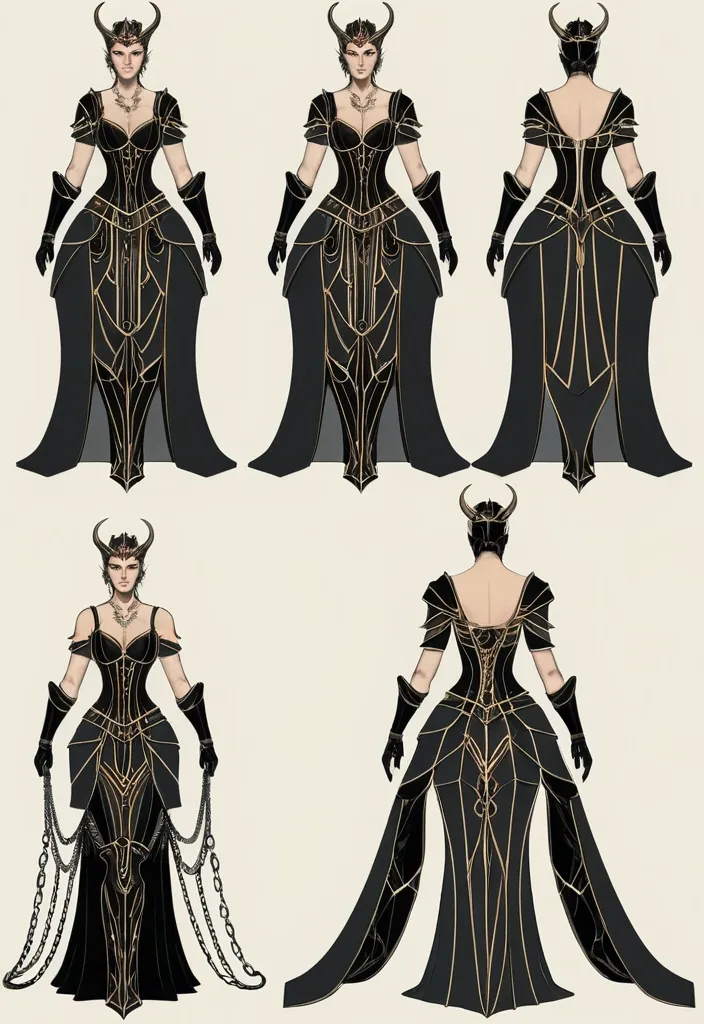
Concept art sheet , three full-body variations of the same character in one image. A horned centauress aristocrat , elegant and predatory , noble fantasy design. Cold , confident expression , noble posture , high-status aura. Each variation shows a different outfit design: Variation 1: Open structured corset with side cut-outs and a subtle underbust opening , rigid elegant armor-like shape. Back design features decorative chains forming a geometric pattern across the back , attached to a high ornate belt. Variation 2: Very open corset with minimal front coverage , emphasizing torso and waist , no cleavage but strong silhouette. Back is highly decorative with crossed straps and long flowing fabric panels cascading down from the upper back , aristocratic drapery. Variation 3: Moderately open V-shaped ,

Phenomenal Upside-Down: Aerial perspective , top-down view of a dancer in dynamic motion , pose a dance , rendered entirely as a luminous pointillism sculpture made of thousands of glowing , translucent stripes and beads in a vibrant rainbow gradient. The figure and body curve dissolve into cascading strands of black particles trailing downward , evoking speed and ethereal energy. The gown flows into a dramatic train that forms a large , vortex on the ground. Color palette transitions smoothly from cool gray and black in the upper body to warm dark-blue , gray , and white in the lower body and hands. Intricate circuit frame-like dress and leaves add structural elegance. Dramatic cinematic lighting with strong dots lights and subtle glows against a dark , blurred abstract background with faint black and gray streaks. Moody , futuristic atmosphere blending surrealism and hyper-realism. Close-up side view with slight low-angle perspective for heroic feel , shallow depth of field to emphasize the subject. Ultra-high resolution , intricate details , vibrant yet harmonious colors , masterpiece digital art in the style of advanced 3D rendering and particle simulation. ,

A breathtaking 8K hyperrealistic , cinematic photograph , ultra-detailed , showcasing a powerful and beautiful angelic figure. She possesses a voluptuous , strong feminine form , with majestic , luminous white feathered wings and a gentle expression framed by striking blue eyes. She is gracefully levitating in mid-air , subtly suspended as if on an invisible ethereal current , her arms elegantly posed , holding a beautifully wrapped Christmas gift box adorned with a golden ribbon. Her long , dark , slightly glowing hair flows freely , moved by an unseen magical breeze. She wears an elegant , flowing , ethereal white lace gown with intricate floral embroidery , crafted from mystical , subtly sheer fabrics that exquisitely accentuate her refined silhouette. Behind her , an expansive , enchanted snowy night fantasy world unfolds under a vast , starry night sky , filled with gently falling snowflakes. Below , a sprawling , illuminated fantasy cityscape glimmers with warm glowing windows , and a massive , intricately decorated Christmas tree stands majestically in the distance. The breathtaking landscape also reveals subtle elements of mystical floating islands , distant , snow-capped mountains , and ancient , magic-infused ruins , all inspired by the most prestigious designer of nature , goddess Aphrodite. Magical energy subtly radiates around her body. The atmosphere is profoundly ethereal , festive , and mystical , bathed in soft , glowing cinematic light that emphasizes her divine , powerful presence. Intricate linework and luminous textures blend seamlessly to create a harmonious composition of unparalleled delicacy and grandeur. The overall style is an exquisite blend of high fantasy majesty with absolute photorealism , achieving an almost sacred , dreamlike quality. ,

In hyperrealistic style , generate a landscape format image of two people sitting in a Japanese style room lit by soft golden and reddish orange lantern lights. The interior of the room is zen minimalistic , with traditional black , white , beige , red , pink , and gray colors. Include shoji screens , tatami , a low tea table , and similar traditional Japanese furniture elements in the interior design. The two people (one man and one woman) are not Japanese , but caucasian , with mediterranean and middle-eastern facial features , but wearing traditional Japanese kimonos. The man has a beard and short wavy hair. He has middle eastern facial features and strong dark eyebrows. He is wearing an intricate dark burgundy kimono. The woman is a clear winter type with small facial features , strong dark eyebrows and dark bluish black curly hair. The woman is wearing a metallic shimmering royal blue and teal kimono. They are eating gyoza , sushi , wakame , miso soup , ramen , and other traditional Japanese foods and drinks. There are a few incense sticks burning in the room and there are a few bonsai trees on small decorative tables in the corners. The tatami has a rich emerald green color. Outside , visible through the open shoji doors of the room , we can see a Japanese onsen setting with natural pools and rocks , lit by crisp clear bright moonlight. Make the contrast between the interior and exterior strong: the interior should have a warm , soft lighting , and the exterior's moonlight should be sharply contrasted , with strong , clear lines and cool dark coloring. ,

In hyperrealistic style , generate a landscape format image of two people sitting in a Japanese style room lit by soft golden and reddish orange lantern lights. The interior of the room is zen minimalistic , with traditional black , white , beige , red , pink , and gray colors. Include shoji screens , tatami , a low tea table , and similar traditional Japanese furniture elements in the interior design. The two people are not Japanese , but caucasian , with mediterranean and middle-eastern facial features , but wearing traditional Japanese kimonos. The man has a beard and short wavy hair. He has middle eastern facial features and strong dark eyebrows. He is wearing an intricate dark burgundy kimono. The woman is a clear winter type with small facial features , strong dark eyebrows and dark bluish black curly hair. The woman is wearing a metallic shimmering royal blue and teal kimono. They are eating gyoza , sushi , wakame , miso soup , ramen , and other traditional Japanese foods and drinks. There are a few incense sticks burning in the room and there are a few bonsai trees on small decorative tables in the corners. The tatami has a rich emerald green color. Outside , visible through the open shoji doors of the room , we can see a Japanese onsen setting with natural pools and rocks , lit by crisp clear bright moonlight. Make the contrast between the interior and exterior strong: the interior should have a warm , soft lighting , and the exterior's moonlight should be sharply contrasted , with strong , clear lines and cool dark coloring. ,

Epic fantasy scene featuring a powerful female figure levitating in mid-air. Her body is upright , arms extended horizontally in a T-pose , legs together , as if suspended by magical energy. She has a voluptuous , strong feminine figure , well-proportioned and heroic. Her long dark hair flows freely around her , moved by an unseen wind. She wears fantasy-style garments or armor adapted to her form , elegant and otherworldly , made of mystical fabrics or enchanted materials. Behind her unfolds a vast fantasy world: floating islands , distant mountains , ancient ruins , and a dramatic sky filled with clouds and glowing light. Magical energy radiates subtly around her body. Cinematic lighting , high fantasy atmosphere , ultra-detailed , dynamic clouds , epic scale , powerful and divine presence , 8K quality. ,

A minimal editorial illustration of a person flying a kite in a wide blue sky with soft white clouds. The person is shown from the side/back , wearing a muted earthy shirt , holding a thin white kite string. The kite is formed entirely from stacked white uppercase typography , arranged diagonally to create a clear diamond-shaped kite silhouette. The words forming the kite are: UTTARAYAN HAPPY MAKAR SANKRANTI The text itself shapes in the kite , with perspective and spacing that suggest movement in the wind , similar to typographic kites in modern poster design. A small triangular tail or arrow appears below the text , connected to the string. Flat illustration style , subtle paper grain texture , calm aspirational mood , minimal composition , strong negative space. ,

**"A celestial woman with flowing crystalline hair stands amidst a frozen dreamscape , her entire body sculpted from translucent diamond latticework that refracts light into prismatic rainbows. Each strand of her waist-length hair glows with internal fractals , moving like liquid glass in an unfelt wind. Her piercing diamond eyes contain swirling galaxies , pupils shaped like perfect cut gemstones that shift color with her emotions. She wears a gown of frozen starlight—a translucent , ice-like fabric that floats around her body in impossible gravity-defying folds , revealing subtle veins of glowing azure energy beneath its surface.** **The environment amplifies her ethereal presence:** - **Microscopic ice crystals** suspended around her form delicate halos of light - **Subsurface scattering** makes her skin glow from within , revealing intricate crystal structures - **HDR enhancement** captures every spectral highlight and shadow in hyperreal detail - **16K resolution** reveals individual geometric facets in her diamond fingertips - **Background auroras** cast ever-changing colors across her flawless form **Mood:** Otherworldly elegance meets frozen perfection—a being of impossible beauty carved from the heart of a dying star. **Style:** **Hyper-realistic digital fantasy** blending **sci-fi material science** with **romantic ethereal aesthetics**. Rendered with **ray-traced refraction** and **volumetric caustics** for photorealistic light interaction across her crystalline form." This version maintains your core vision while adding: 1. Stronger environmental storytelling 2. Advanced material/texture details 3. Cinematic lighting techniques 4. Technical rendering specifications 5. Emotional atmosphere The result should be a breathtaking image that pushes the boundaries of fantasy realism.ar-9:16 ,
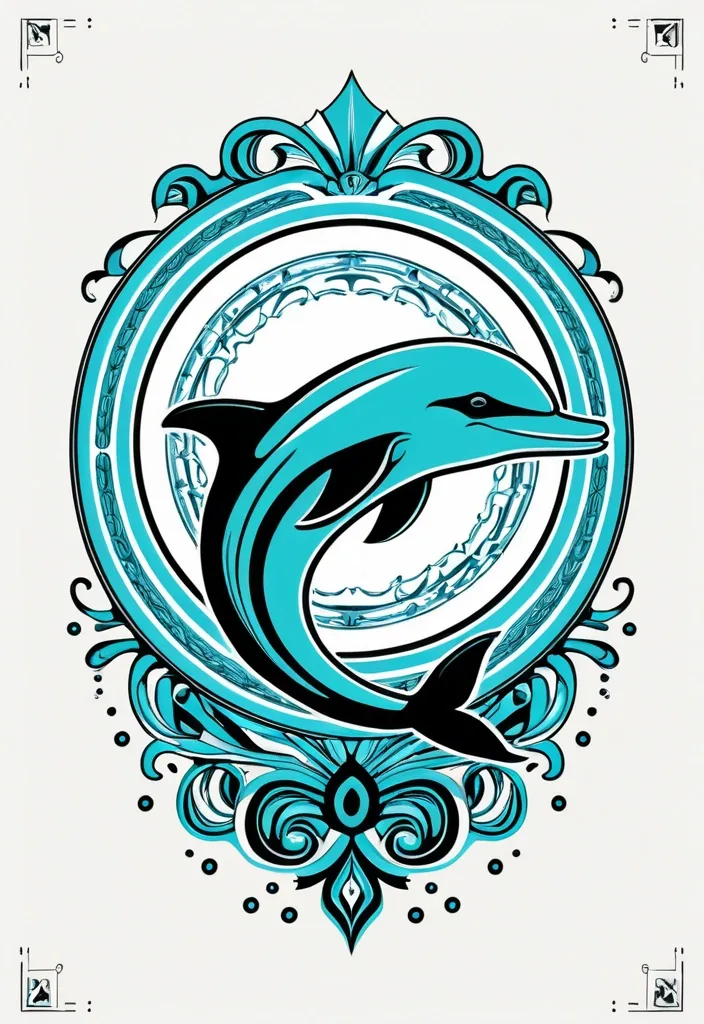
Highly detailed vector-style illustration of a dolphin , centered composition , symmetrical and emblem-like design. Bold thick black outlines , sharp graphic shapes , strong contrast. Limited color palette with dominant tones of blue , turquoise , white , and black , with subtle accent colors. Tattoo-inspired and street-art aesthetic , modern graphic poster style. Decorative ornamental elements integrated into the dolphin’s body and background. Clean vector look suitable for T-shirt print , high resolution , flat colors , no gradients. Dynamic , powerful , and slightly aggressive yet elegant mood. White background. At the bottom , stylized hand-lettered text: “My Crimea”. ,
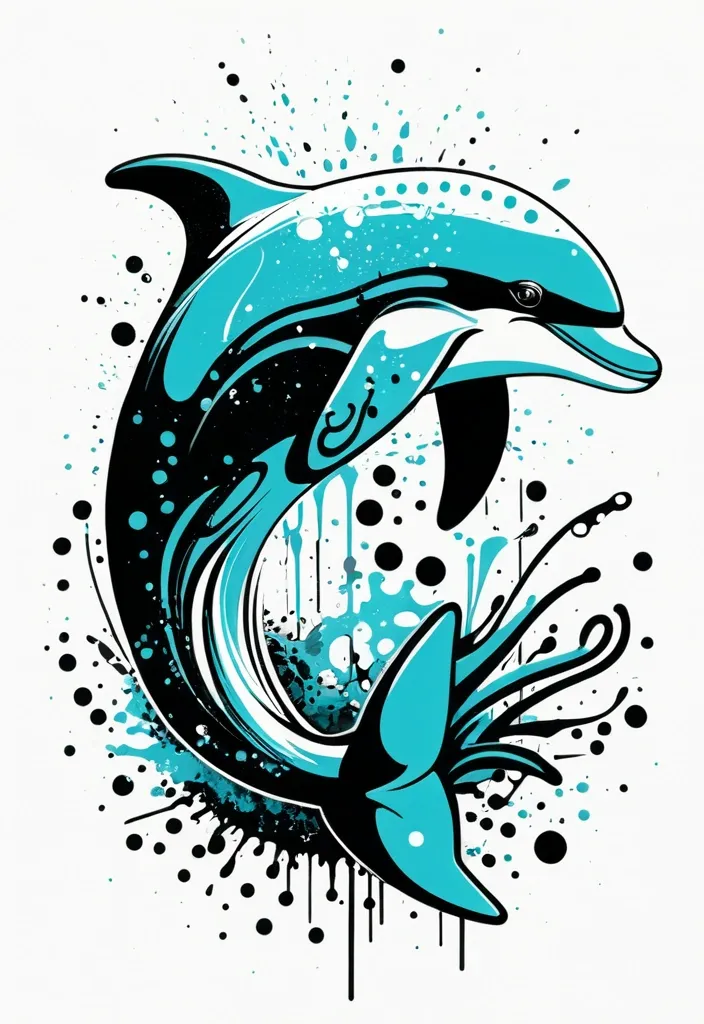
A highly detailed graphic illustration of a dolphin , designed for t-shirt print. Symmetrical composition , bold thick black outlines , sharp graphic shapes. Style inspired by street art , tattoo art and graffiti illustration. Limited color palette: black , white , shades of blue and turquoise , with accent splashes and ink drips. High contrast , clean vector-like finish , strong central composition. Decorative elements around the dolphin: abstract shapes , ornamental lines , halftone dots , paint splashes. Modern urban aesthetic , edgy but clean , suitable for apparel design. White background. At the bottom of the illustration , add hand-drawn lettering text: “My Crimea”. Ultra high resolution , print-ready , no background texture. ,

A smooth thick oil impasto scene painted entirely with a palette knife. A mallu rajasthani woman dressed in village attire , blue big eyes , complete with intricate embroidery sits near small pond. Her traditional short-Saree with black-gold patterns is sculpted in wet , ultra-thick oil paste , with deep folds and luminous chiaroscuro. Her dusky skin and dark bun are softly raised with subtle impasto. A baby goats stand confidently , near her. Beneath , ultra-smooth thick impasto water in deep teal and desert sand forms raised concentric ripples at her touching foot. The reflection is stretched , fluid , and blurred. Background foliage is built from sweeping palette-knife strokes , date palm trees , soft light depth , and strong 3D layering. Entire composition uses heavy paste , sculptural contours , volumetric depth , and cinematic chiaroscuro with ray-traced highlights. ,

Ultra-realistic winter night photograph taken from a low-angle wide-shot perspective at ground level. At Kevadia in the state of Gujarat , India. back: whimsical a dam over Narmada river between mountains , and Statue of Unity is the world's tallest statue (Indian politician and independence activist Sardar Patel) on the right side: fluid curves , dynamic asymmetric structure , glossy white and metallic surfaces illuminated by bright cool white and cyan LED lines. Wide-angle lens look with strong foreground depth. Bright electric-blue sky , vivid and luminous , with smooth gradients and no fog. Modern neon “Statue Of Unity” label integrated naturally. Very light , subtle snowfall , minimal and elegant. Snow-covered mountains visible in the distance with sharp edges. Hyper-realistic details , high clarity , full-frame dynamic range , premium futuristic mood. ,

Cinematic neon-lit action scene over skyscraper street at night. A futuristic setting. 880 meets 1380 with a futuristic stage couch that hovers without wheels (no-wheels) , (a 2019 musical fantasy film and a live-action adaptation of Disney's 1992 animated film 'Aladdin') Aladdin sit on and enjoy hookah , drifting sideways at high speed , couch's edge generating sparks and smoke. Strong motion blur , glowing cyan underglow , dramatic reflections on the couch body , and intense rim lighting. Camera angle is top and dynamic , hover to the ground , capturing the drift arc and flying debris. Hyper-stylized realism with anime-inspired lighting , sharp highlights , and deep shadows. ,

Cinematic neon-lit action scene over skyscraper street at night. A futuristic setting. 880 meets 1380 with a futuristic Carpet that hovers without wheels (no-wheels) , (Red Ethnic Rustico carpet with Anti Skid Backing) Aladdin and Jasmine on Carpet , drifting sideways at high speed , carpet's edge generating sparks and smoke. Strong motion blur , glowing cyan underglow , dramatic reflections on the Carpet body , and intense rim lighting. Camera angle is top and dynamic , hover from the street-ground , capturing the drift arc and flying debris. Hyper-stylized realism with anime-inspired lighting , sharp highlights , and deep shadows. ,

Cinematic neon-lit action scene inside a tunnel at night. A futuristic setting. 880 meets 1380 with a futuristic stage couch that hovers without wheels (no-wheels) , (a 2019 musical fantasy film and a live-action adaptation of Disney's 1992 animated film 'Aladdin') Aladdin sit on , drifting sideways at high speed , couch's edge generating sparks and smoke. Strong motion blur , glowing cyan underglow , dramatic reflections on the couch body , and intense rim lighting. Camera angle is low and dynamic , close to the ground , capturing the drift arc and flying debris. Hyper-stylized realism with anime-inspired lighting , sharp highlights , and deep shadows. 16:9 aspect ratio. ,

"Create a highly detailed graphic illustration in the style of bold tattoo linework and vintage engraving , similar to streetwear T-shirt designs. Central character: a powerful Crimean deer with large antlers , drawn with thick dynamic contour lines , deep shadows , textured hatching and dramatic contrast. Surround the deer with elements of Crimean nature — jagged Crimean mountains , rocky cliffs , pine trees shaped by the wind , and coastal atmosphere. Add dynamic decorative strokes , broken lines , and graphic splashes like in aggressive streetwear art. Composition should be symmetrical , dense , and high-impact , suitable for DTF or screen printing. Include stylized lettering ‘Crimea’ or ‘Крым’ in a bold graffiti-inspired script. Overall vibe: strong , wild , energetic , mythic , modern streetwear aesthetic." ,
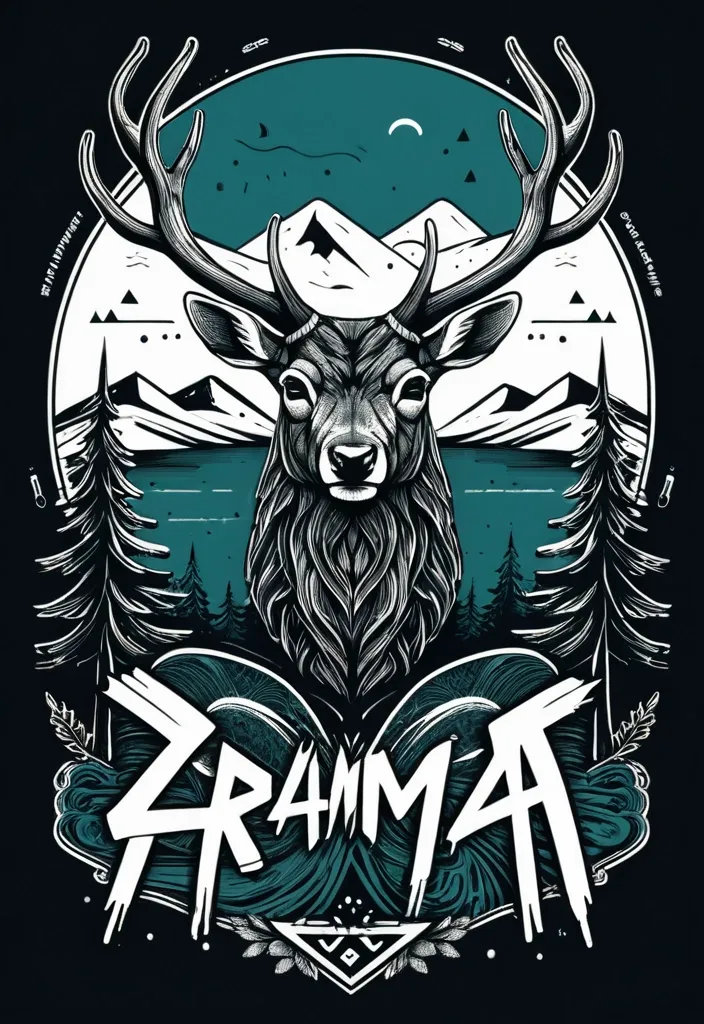
"Create a highly detailed graphic illustration in the style of bold tattoo linework and vintage engraving , similar to streetwear T-shirt designs. Central character: a powerful Crimean deer with large antlers , drawn with thick dynamic contour lines , deep shadows , textured hatching and dramatic contrast. Surround the deer with elements of Crimean nature — jagged Crimean mountains , rocky cliffs , pine trees shaped by the wind , and coastal atmosphere. Add dynamic decorative strokes , broken lines , and graphic splashes like in aggressive streetwear art. Composition should be symmetrical , dense , and high-impact , suitable for DTF or screen printing. Include stylized lettering ‘Crimea’ or ‘Крым’ in a bold graffiti-inspired script. Overall vibe: strong , wild , energetic , mythic , modern streetwear aesthetic." ,
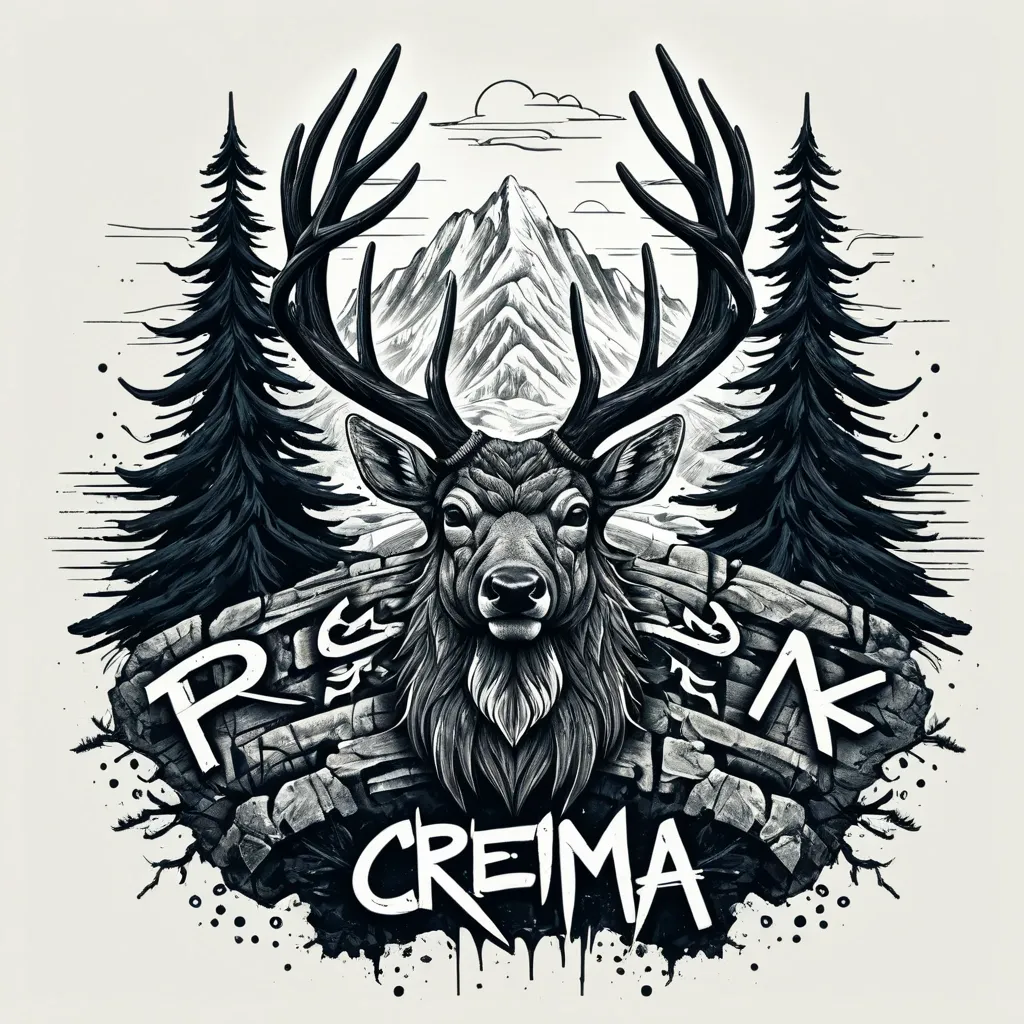
"Create a highly detailed graphic illustration in the style of bold tattoo linework and vintage engraving , similar to streetwear T-shirt designs. Central character: a powerful Crimean deer with large antlers , drawn with thick dynamic contour lines , deep shadows , textured hatching and dramatic contrast. Surround the deer with elements of Crimean nature — jagged Crimean mountains , rocky cliffs , pine trees shaped by the wind , and coastal atmosphere. Add dynamic decorative strokes , broken lines , and graphic splashes like in aggressive streetwear art. Composition should be symmetrical , dense , and high-impact , suitable for DTF or screen printing. Include stylized lettering ‘Crimea’ or ‘Крым’ in a bold graffiti-inspired script. Overall vibe: strong , wild , energetic , mythic , modern streetwear aesthetic." ,
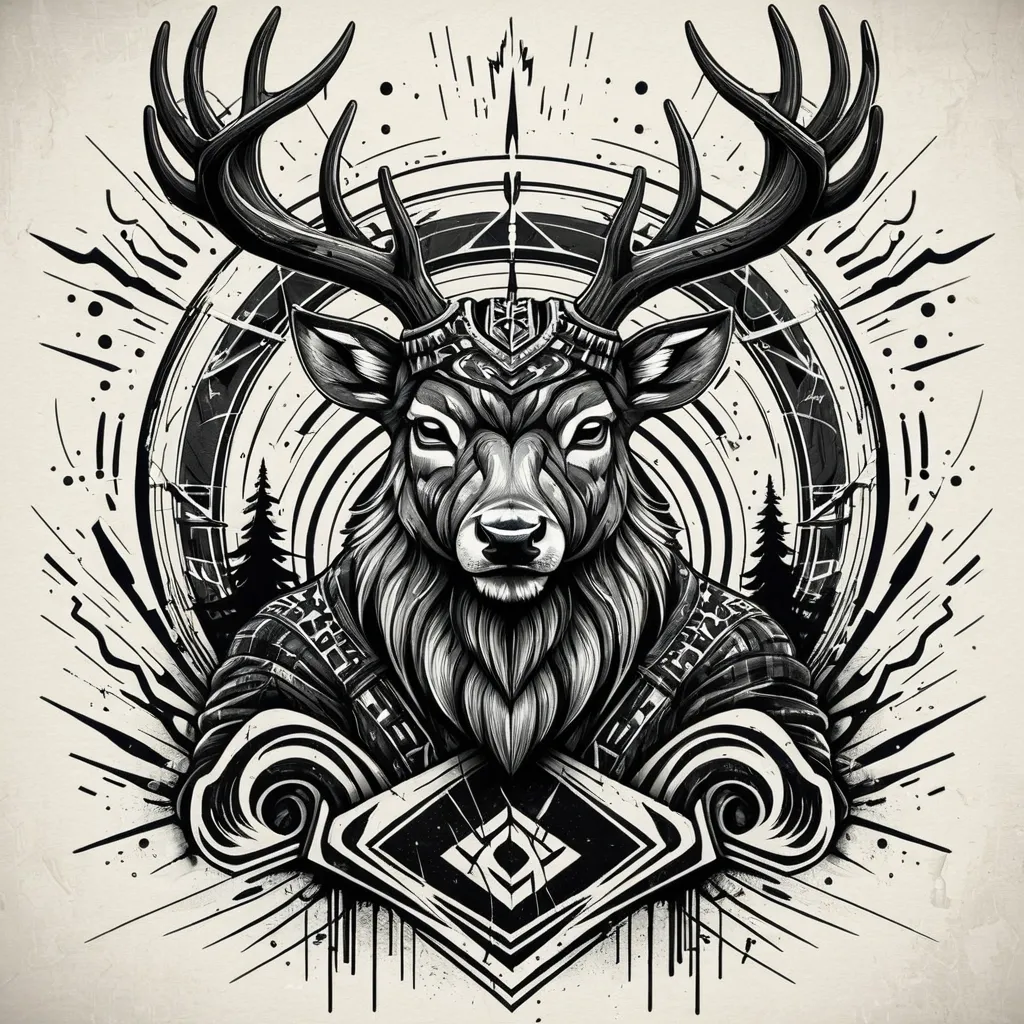
Create a bold , highly detailed illustration in the style of streetwear graphic art similar to tattoo-style Siberian designs. Central character: a powerful deer with large antlers , drawn in an aggressive and dynamic manner. Use thick expressive lines , dense hatching , dramatic shadows , and sharp contours. Add cracked stone textures , wooden elements , and ornamental details around the deer. Behind the deer , include energetic graphic shapes and strokes to add movement. The composition should be vertically tall , suitable for a t-shirt print. Add stylized lettering at the top and bottom (do not copy existing brands). Overall style: gritty , powerful , masculine , with strong contrast and high detail. ,
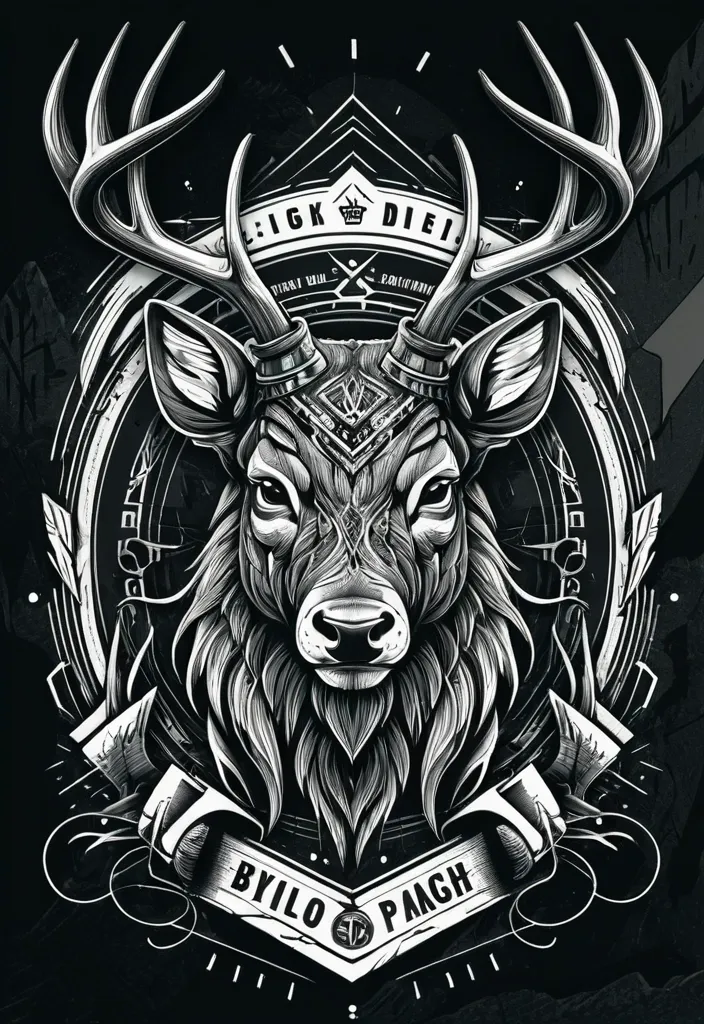
Create a bold , highly detailed illustration in the style of streetwear graphic art similar to tattoo-style Siberian designs. Central character: a powerful deer with large antlers , drawn in an aggressive and dynamic manner. Use thick expressive lines , dense hatching , dramatic shadows , and sharp contours. Add cracked stone textures , wooden elements , and ornamental details around the deer. Behind the deer , include energetic graphic shapes and strokes to add movement. The composition should be vertically tall , suitable for a t-shirt print. Add stylized lettering at the top and bottom (do not copy existing brands). Overall style: gritty , powerful , masculine , with strong contrast and high detail. ,
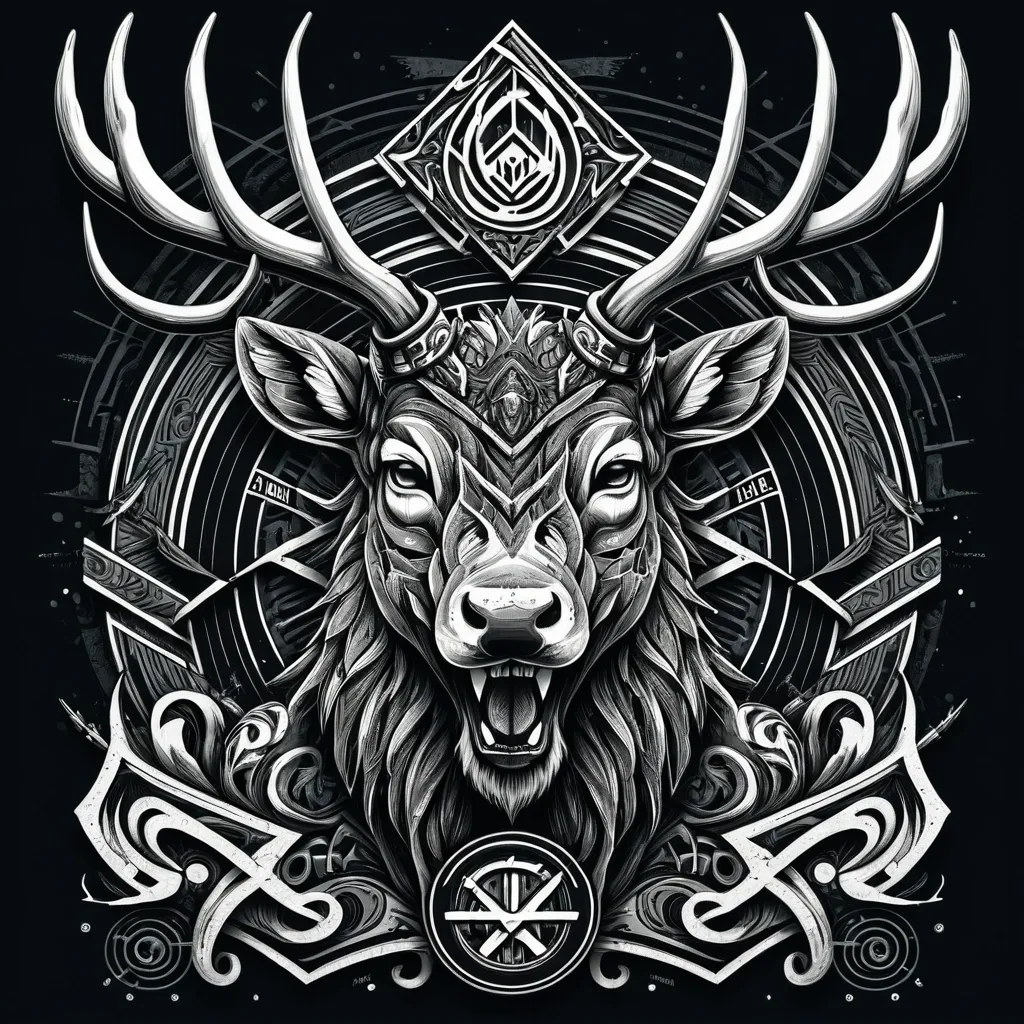
Create a bold , highly detailed illustration in the style of streetwear graphic art similar to tattoo-style Siberian designs. Central character: a powerful deer with large antlers , drawn in an aggressive and dynamic manner. Use thick expressive lines , dense hatching , dramatic shadows , and sharp contours. Add cracked stone textures , wooden elements , and ornamental details around the deer. Behind the deer , include energetic graphic shapes and strokes to add movement. The composition should be vertically tall , suitable for a t-shirt print. Add stylized lettering at the top and bottom (do not copy existing brands). Overall style: gritty , powerful , masculine , with strong contrast and high detail. ,
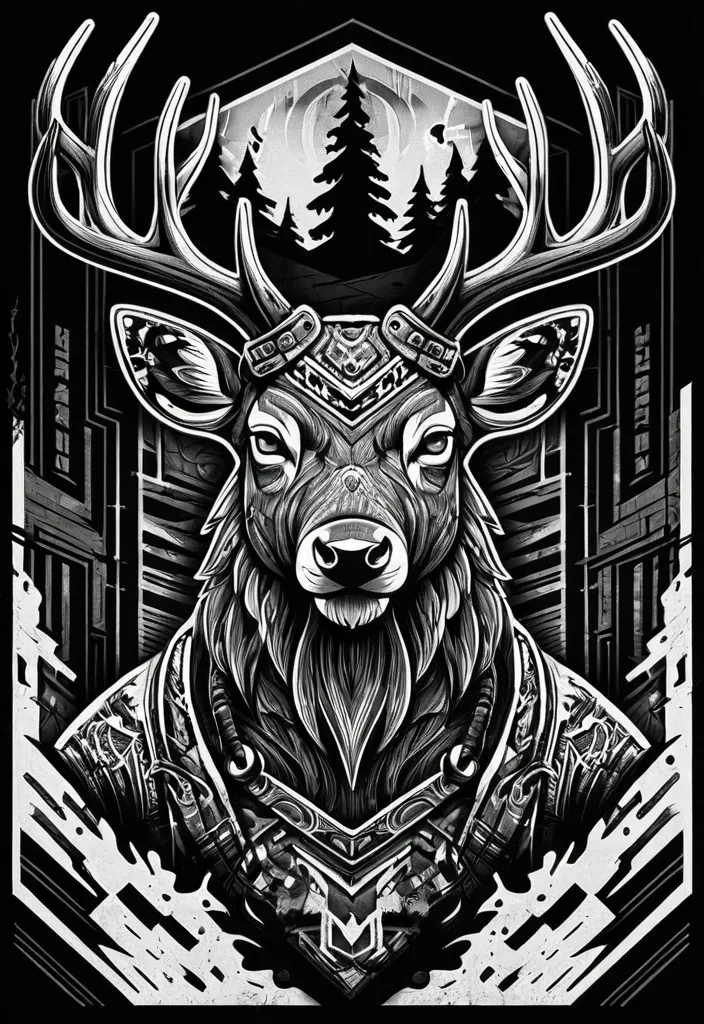
Create a bold , highly detailed illustration in the style of streetwear graphic art similar to tattoo-style Siberian designs. Central character: a powerful deer with large antlers , drawn in an aggressive and dynamic manner. Use thick expressive lines , dense hatching , dramatic shadows , and sharp contours. Add cracked stone textures , wooden elements , and ornamental details around the deer. Behind the deer , include energetic graphic shapes and strokes to add movement. The composition should be vertically tall , suitable for a t-shirt print. Add stylized lettering at the top and bottom (do not copy existing brands). Overall style: gritty , powerful , masculine , with strong contrast and high detail. ,

20s ish human monkHis eyes Are Green iridescent , like a June bug. Dark long eyelashes and a natural winged eyeliner His hair is a soft golden honey brown with heavy wavy locks that he keeps cut currently into a Mohawk.His skin is a dark olive Mediterranean tone.6’2” , 175 , very trim but pronounced muscles like an Olympic swimmer.Even though he has striking features like a strong jawline and high cheek bones , He wears silk monk robes in the burnt orange with blue with floral burnt orange silk liner that shows on his lapel , collar , arm holes , and leggings. He wears a yellow silk belt with a wood beaded rope that is actually a whip , pouches , and ordimental jewelry of his monastery and from his family; such as earrings , necklaces , bracelets , ankle bracelets , and rings ,



